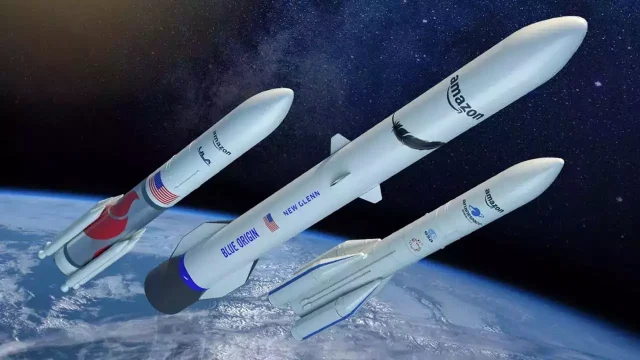Amazon shared the latest developments regarding the Kuiper Project, in which it will compete with SpaceX. Amazon has successfully validated key technology that will increase throughput and reduce latency for customers using Project Kuiper’s satellite service, the company said in a statement. Here are the details…
Amazon will equip the satellites it will launch within the Kuiper Project with the latest technology!
Amazon will rival SpaceX. It will launch internet satellites called Kuiper Project alongside Musk’s Starlink satellites. It equips these satellites with high technology to provide better internet service and increase efficiency.

In a statement made on Thursday, the company stated that it has successfully completed the tests of this technology, which will increase the efficiency of satellites. The technology, called OISL for short, provides optical inter-satellite connections and allows data to be sent between spacecraft in orbit. For this, it uses infrared lasers. So, has this technology been used before? In previous generations, this technology only connected two satellites at a time. Thanks to this technology, the satellites of the Kuiper Project will be able to connect with many spacecraft at the same time. Thus, OISL will create a satellite network in space.
Amazon had to overcome many challenges to enable this advanced OISL. The spacecraft is traveling at up to 15,534 miles per hour with all the associated orbital dynamics. Lasers must have a narrow and very accurate beam to ensure contact at distances of up to 2,616 miles. The company says its optics and control system overcome all these obstacles.
“These tests validated the final component of Project Kuiper’s advanced communications architecture. The results ensure that OISLs will be operational on our first production satellites, scheduled for launch in the first half of 2024,” Amazon said. said.
This network feature is of great importance. Because the satellites of the Kuiper Project will be faster than their competitors thanks to this network feature. Because with this technology, satellites will be able to carry data approximately 30% faster than terrestrial fiber optic cables that send data over an equivalent distance.
Rajeev Badyal, Kuiper’s vice president of technology, made a statement on the subject. “With inter-satellite optical links across our satellite constellation, Project Kuiper will operate effectively in space. This system was designed entirely in-house to optimize speed, cost and reliability. Plus, the entire architecture worked flawlessly from the beginning.”














